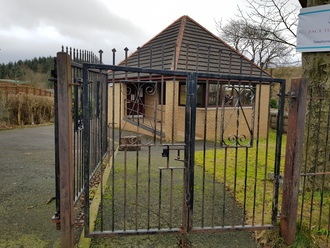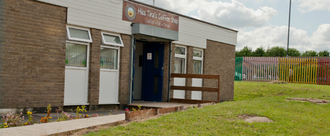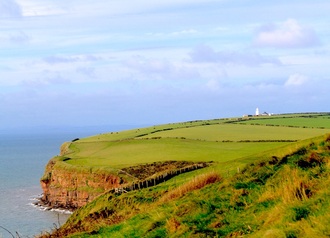-
Save humanity - Support homeless people in StratfordFor several years Stratford Shopping Centre have stayed open 24hrs a day allowing for those whom are homeless to have somewhere dry and secure to shelter/sleep during the night. However as of today (29/01/2018) they have handed orders to all those currently staying in the centre, ordering them to leave with immediate effect. This means the homeless people are being forced out on to the streets in these extreme weathers, some of these people don’t even own a sleeping bag or adequate warm clothing which means they are at high risk of falling extremely ill. We are petitioning for Stratford Centre/Newham Council to rethink their decision and to continue allowing for our homeless friends to continuing using Stratford as a secure place for them to be during the night as many of them are highly vulnerable and some are also very elderly. Newham Council urgently need to support these homeless people with their housing/accommodation as these people cannot continue living on the streets.218 of 300 SignaturesCreated by Sherrel Mcneish
-
Allow Dr Glen to open a branch surgery in CaldercruixDr Glen has renewed her application to add Plains, Caldercruix and Hillend to her practice area and is hoping to achieve this by August 2018 with agreement from Lanarkshire NHS. The Primary Care Department of NHS Lanarkshire gave assurances in Caldercruix in January 2014 at a public meeting that there would continue to be GP services in Caldercruix at dedicated premises.The present service is well short of the assurances given to Alex Neil MSP in 2014 about a commitment to having a GP in the village. Assurances were also given to the Scottish Government that a GP would be in place in the village. The NHS is under pressure and Dr Glen is able to offer appointments in a permanent building with nursing and administrative support all ready to run for the benefit of local villages.282 of 300 SignaturesCreated by Carol Campbell

-
RIVER ITCHEN - URGENT POLLUTION APPEALBakkavor Alresford Salads have applied to the Environment Agency for a renewal licence to continue to put into the river their daily factory wash down described as TRADE EFFLUENT containing a cocktail of powerful chemicals to replace and supposedly improve on the chlorine based biocide they have been using for years. Their impenetrable application can be found at https://www.gov.uk/government/publications/so24-9dz-bakkavor-foods-limited-environmental-permit-application-advertisement This application is important to the river and the environment and raises many questions, some of which are listed below; Is the quality of the river Itchen important? YES. It is protected by being in a Site Special Scientific Interest and has the highest European rating as a Special Area of Conservation. Has the Environment Agency, charged with protection of this pristine and iconic river, been successful over the last twenty years? NO. Alresford Pond is now full of man made chemicals and the Upper Itchen fails water quality objectives under the Water Framework Directive and falls short of conservation objectives under the EU Habitats Directive. How does the Upper Itchen compare with other rivers? VERY BADLY. Directly comparable sampling has shown that the Upper Itchen carries about 5% of the shrimp population in the upper river Meon which has no washing plant. This is indicative of what is happening to all fly and bug life in the Itchen. Is the water quality in the Itchen improving? There is NO EVIDENCE that it is and much evidence of a thirty year uninterrupted decline. Does polluting the river matter? YES. It matters to all aquatic life from sticklebacks to trout and much bird life from king fishers to swifts. Does chlorine discharged from the factory dissipate? YES after years if discontinued. If this licence renewal is refused is there an alternative? YES. The factory should connect to the sewer for all contaminated water. Has the Environment Agency required any other company to do this? YES. The salad washing plant at St Mary Bourne was obliged to make this connection years ago despite the Bourne not having the environmental protection of the Itchen.. Can the company afford the cost of making the connection? YES. The owners Bakkovor, a multinational company, has an income of £1.7billion a year. If the contaminated factory discharge went to the sewer would it resolve the river’s pollution problem? Probably not but it would be a first step. IF YOU BELIEVE THAT THIS LICENCE SHOULD NOT BE ISSUED BY THE ENVIRONMENT AGENCY YOU SHOULD WRITE TO: ENVIRONMENT AGENCY, Permitting and Support Centre, WQ Team, Quadrant 2, 99 Parkway Avenue, SHEFFIELD , S9 4WF Although not directly relevant to this licence you might also ask yourself whether you think that the pesticides, insecticides, fertilizer, soil or whatever, should not be washed off these salad vegetables in the various countries of their origin rather than trucked or flown and trucked to Alresford to be washed into the pure spring water of the River Itchen.7,586 of 8,000 SignaturesCreated by Jim Murray
-
Save our Coffee ShopMiss Tina’s is being asked to pay full Business Rent on our facilities. Unfortunately, as a not-for-profit organisation, this will result in the closure of Miss Tina’s in Barmston. Please could you show your support for keeping Miss Tina’s open by signing the petition to reduce our rent.2,235 of 3,000 SignaturesCreated by Tina Hogben
-
Save QEQM Stroke ServiceThese vital life saving services should be provided at QEQM in Margate. Anyone having a stroke needs to act FAST and get to a hospital for treatment as quickly as possible. Ashford is simply too far away. Thanet already has some of the worst stroke outcomes. Life saving stroke treatment should not be cut due to reducing funding in our NHS.2,562 of 3,000 SignaturesCreated by Karen Constantine
-
Let the NHS manage Wellness and Cancer, not just deliver current treatmentsCurrent projections for cancer show that 1 in 2 of us will be diagnosed in our lifetimes. And obviously, even once its reached 1 in 2, it continues Current treatment attacks the cancer, and therefore the body's own systems There are a growing number of people aiming to rebuild/strengthen their immune systems instead. None of this date is being collected and used. Similarly for the many millions of people regularly taking responsibility for their health themselves. We need to change the way we manage health, and learn from wellness, not just illness. For e.g We're facing 1 in 2 being diagnosed with cancer. The only treatment offered, allowed, or assessed is chemical, aiming to destroy the cancer. No one is assessing people working toward natural, or integrated wellness at all The NHS see 1m people every 36 hrs. If they were collecting information about wellness, not only would the data fund the NHS and more, it would help what we know about reducing all illness, including cancer. Cancer research looks primarily at how we attack cancer in ways that are increasingly less brutal. No one's looking at how we live well with cancer so it can cope with the illness, and strengthen the body rather than attacking the illness. This is true for many other illnesses. Looking at kinder ways to strengthen the body could impact on all illnesses, not just cancer. We're becoming immune to what 1 in 2 being diagnosed with cancer really means, as it's too scary to really consider. Take a moment. 1 in 2 of our loved ones getting cancer, and only being offered treatments that attack the body. 1 in 2 having this treatment might not be the best we can do. How do we know if we don't look? It's no enough just to keep managing a rapidly spreading illness. We need to look at how to reduce the numbers. Screw '1 in 2' Please comment, so we can add your experience to ours, and join a Health Crowdsolving group at https://www.facebook.com/groups/Dyingtoknow/. All you need is your opinion, and you can help to make a difference. The aims of this specific group are to involve people in looking at how we manage wellness; to look at how we take personal responsibility for our own health; and to help make change.670 of 800 SignaturesCreated by Carol Coombes

-
Stop the STPAs a result of underfunding our local NHS has some of the worst A&E waiting times in the country, fewer GPs and am an ambulance service in special measures, missing targets and putting lives in danger. While people lie waiting in corridors, the Tories are publishing plans that use words like transformation and integration when they mean cuts and rationing. These plans, called Sustainability & Transformation Plans (STPs), will cut £486 million from the NHS in Kent. It’s not about improving healthcare, it’s all about cutting costs. Since the government’s disastrous Health and Social Care Act was passed the NHS has been continuously sliced up for tendering out. The STPs make NHS services even more vulnerable to selling off to huge corporations through so-called Accountable Care Systems, even while the NHS itself becomes less joined up and as we have seen this winter less able to cope with needs and demand.127 of 200 SignaturesCreated by Chris Cornell
-
Call in the Decision and Keep Cumbrian Coal in the Hole (its too near Sellafield)What Opponents are Saying: "If this mine were to go ahead and the coal that is now safely underground in the custody of Cumbria County Council were to end up as CO2 in the atmosphere, there would be a serious risk of climate change impacts including some thousands of deaths extending long into the future. The mine could also result in global loss of livelihoods and homes numbering many times greater than the jobs created in Cumbria." Laurie Michaelis. ( He was a Lead Author or Convening Lead Author on several IPCC reports, including the Special Report on Emission Scenarios). "Disturbance of nesting seabirds during construction and operation... The development has the potential to have an adverse effect upon the St Bees Head SSSI through disturbance to both breeding and wintering birds during construction and operation." RSPB “ little supporting information appears to have been provided by the applicant regarding the excavation of the new drifts" National Trust “It is clear that this is a very large mine, with a very long life span…of 20-50 years and a peak of 2.8 million tonnes a year. Assuming a 40 year life (following construction), and an average of 2 million tonnes a year, that is a total production of 80 million tonnes, which will emit around 175 million tonnes of carbon dioxide. The level of emissions and proposed life-time of the mine is of major concern….We would also query whether or not there has been robust enough analysis of the potential for seismicity (and subsidence) relating to well-known nuclear facilities in the wider area, including Sellafield and proposed new facility at Moorside? What potential is there for seismicity to effect these and other facilities (including the low level waste repository at Drigg) and the possible high level waste radioactive waste facility which has been proposed in West Cumbria for some time.” Friends of the Earth "The mining company’s aspiration is that scarce investment funding will come from Cumbria’s Local Enterprise Partnership. I will be very interested to understand the business justification for any such investment.” Graham Vincent, Portfolio Holder for Economy, South Lakeland District Council “The application should be rejected because it is not in the national interest. From reviewing the documents submitted by West Cumbria Mining it is clear that the intention is to export the coal to Europe and Asia…The application to mine is too close to the Sellafield nuclear site and the proposal for another nuclear power station at Moorside. Underground mining can have a significant impact on the surrounding areas, recently a coking coal mine in Russia triggered an earthquake.” Coal Action Network "There are significant risks of subsidence offshore, where there are known to be layers of chemical and radioactive pollution on the sea bed. The application addresses this by extracting only a significant distance off shore, and pumping mining waste back into the voids which it is claimed will reduce the subsidence risk. a. Toxic substances disturbed by subsidence would move freely through the marine environment and there could be no way of preventing adverse impacts in protected areas, and to fish and other marine organisms. One impact which can bring the reality of the risk home to us, is that the percentage of multi-wintering salmon returning to Cumbrian rivers has reduced from 25% to 2-3%. All the rest die at sea. Our river salmon populations are plummeting, and have been described as an extinction event, and it is due to changes in the marine ecology and environment." Mrs Maggie Mason BA(Arch) Dip TP "As I understand it, the sole justification from a sustainability point of view is that the extracted coal will be coking coal, not thermal coal (for use in power stations), with some preposterous notion that this will apparently produce a lower carbon footprint than coking coal imported from other countries. Yet so far as I can tell, no detailed lifecycle analysis, both direct and indirect, has been done by West Cumbria Mining, so why would anyone swallow that particular pile of coking crap?" Jonathon Porritt "Given that this coal mine would extend to just 8km from Sellafield's high level radioactive wastes it is incumbent on Cumbria County Council to remember that the precautionary principle is at the heart of Environmental Law in the UK. A good reason to invoke the precautionary. principle is the possibility of liquefaction at Sellafield resulting from earthquakes in the West Cumbria area as described in a recent scientific paper by Martin Cross, Anass Attya, David J. A. Evans : The susceptibility of glacigenic deposits to liquefaction under seismic loading conditions: a case study relating to nuclear site characterization in West Cumbria". Keep Cumbrian Coal in the Hole, a Radiation Free Lakeland campaign "When the coal mines are exhausted, there is a high risk that the exhausted empty coal mines will be used as a nuclear waste repository, wherein nuclear waste fragments from nearby Sellafield will be mixed with liquid concrete and then injected under high pressure into the empty coal mines to backfill them. If the concrete encapsulation fails, the coal mines will be a constant source of nuclear contamination in future.." Dr Timothy Norris The Environment Agency, the Royal Society for the Protection of Birds, Scientists for Global Responsibility, Dr Laurie Michaelis IPCC author and others continue to state that insufficient evidence has been provided by the developers with no independent assessments having been carried out or asked for by the Council.. The Committee was misled into unanimous approval of the coal mine. We urge the Secretary of State to call this application in for his own determination at the earliest opportunity.2,319 of 3,000 SignaturesCreated by Marianne Birkby
-
Dont take our cancer treatment away!I personally have just got over breast cancer in 2017 and like so many of us, 1 in 8 now in the UK population, I am hoping and working hard with treatment to try to ensure it doesn't come back - but then part of that future is not in my hands. I have seen men and women, young and old experience cancer - some have survived others not. But at some point, unfortunately this disease will effect us all at some point. Please join me in petitioning government to protect cancer treatment and its diagnosis - our lives matter as much as anyone elses'! Help us to save our lives - and that includes your's ....27 of 100 SignaturesCreated by DENISE HEWLETT
-
NO WASTE INCINERATOR FOR CAMBRIDGE : PROTECT OUR AIR QUALITY AND HEALTHIf everyone who saw this, signed and shared it would achieve its objective within the hour! NO WASTE INCINERATOR IN CAMBRIDGE: PROTECT OUR AIR QUALITY AND PUBLIC HEALTH Unborn babies, infants and children are most at risk from incinerator emissions research has proven. Waste incinerators are associated with direct causal links to all-cause mortality, cardiovascular mortality and mortality from lung cancer, higher rates of adult and childhood cancer, birth defects, increased respiratory hospital admissions, a range of emotional and behavioural problems in children, learning difficulties, and delinquency, cell level genetic changes which pose a risk to future generations , and in problems in adults including violence, dementia, depression and Parkinson’s disease, after adjustment for other factors. These findings come from a wide variety of peer reviewed research, meta-analysis and reports conducted by The World Health Organisation (WHO), British Heart Foundation, British Lung Foundation, Friends of the Earth, Greenpeace, Lancet Commission on Pollution and Health, The British Society for Ecological Medicine, DEFRA, Asthma UK, Client Earth. All conclude that incinerators should NOT be approved. This directly affects your health and that of your family and friends. Don’t say you weren’t warned! YOUR VOICE MATTERS and IT DOES COUNT. If approved against all advice from world leading environment, climate change and health advisory bodies, Cambridge air pollution WILL increase, forever, with significant and predictable life threatening and life changing health consequences for many, particularly affecting the most vulnerable youngest members of society. Amey Cespa proposes a £200M waste incinerator in Cambridge that will burn 250,000 tonnes commercial and household waste /yr, from 5 counties incl. Isle of Wight (selling surplus to China), fed at this rate minimum to justify investment. AC already provides facilities for waste recycling, composting, landfill and mechanical biological treatment. Yes, it proposes energy for 45,000 homes and 300 jobs during construction and operations but does that justify proven and predictable health effects above? Read them again – all-cause mortality, cancer, mental health, adverse effects in unborn babies, infants and children who by nature are in a biological window of vulnerability. AC submitted their application 20th Dec for a 21 day public consultation, just before the busiest holiday period of the year. They have followed min. statutory requirements to notify the public. For such a major infrastructure application that presents enormous city wide public health and environmental impact, providing 2 short notice site public information meetings (advertised briefly in neighbouring villages) and 2 recent short notice neighbouring parish council meetings, it does appear like AC would rather prefer the application flew very much under the public radar. The UK and Cambridge has a problem with waste management but if incineration is the answer, somebody asked the wrong question. Waste incineration in Cambridge will produce an unprecedented health risk for people living in and around the city, air pollution WILL increase and forever with significant and predictable health consequences. AC cannot guarantee that waste incineration is safe for public health. Toxin emissions and particulate pollution have to go somewhere. EC reports advise reducing NOT increasing air pollution to reduce and prevent land, coast and sea ecosystem damage due to acidification, thus also protecting water, food chains and organic farmers. There is already local evidence of significant health impacts from the AC Cambridge waste management site. 2016- AC was fined by Cambridge magistrates £50,000 for causing sickness and adverse effects on human health, and prior to these incidents, received 3 enforcement notices 2015 by the Environment Agency. ‘AC fined £50,000’ by F Snoad, Cambridge Evening News, Sep 2016. The environment agency continues to receive regular calls reporting problems with air quality relating to this site. Local newspapers have reported ongoing problems with local residents and workers complaining of feeling sick, gagging, wheezing, sore eyes and throats, constant unpleasant smells causing them to have to keep windows shut. ‘The waste park is poisoning us: Cambridgeshire villagers concern at Amey recycling centre’ by Samar Maguire, Cambridge Evening News, Sep 2017. It is enshrined in EC and UK legislation that reducing emissions produces true health benefits, prevents unnecessary burden on healthcare, and protects against the impacts of acid air and water on local and wide ranging ecosystems including land, coast and sea. Costs of incineration, together with research investigating nonstandard emissions from incinerators, has demonstrated that the hazards of incineration are greater than previously realised including that relating to fine and ultrafine particulates. Operating waste incinerators in urban areas results in dangerous health and environmental consequences from both construction and operation. The accumulated evidence on the health risks of incinerators is simply too strong to ignore and their use in Cambridge cannot be justified now that better, cheaper and far less hazardous methods of waste disposal have become available. The planned chimney stack height is out of keeping with surrounding local village architecture and the Fenland landscape: contravening NPPF guidelines. The proposed site is greenfield which will potentially be adjacent to major new residential areas. Waste minimisation, recycling and composting through innovation and behavioural change are the answer not incineration and certainly not in urban areas. Residents of Cambridge have human right to clean air and their health protected.2,517 of 3,000 SignaturesCreated by Jude Sutton
-
Remove the William Patten school bus stopThe removal of the bus stop is important for several reasons: 1. Pollution levels at the school are over the legal limit. 2. 44% of the pollution at the school comes from buses. And as much as 25% of pollution from buses travelling on their route is caused by them idling at bus stops. The potential for reducing pollution by removing the bus stop is therefore significant. 3. Children are especially vulnerable to the health impacts of air pollution, which include cardio-respiratory illnesses. This is because their immune systems and lungs are still developing. 3. A study has shown that children at school in high-pollution areas are slower to develop cognitively (i.e. their attentiveness, memory and brain development). 4. Removing the bus stop is one of the only ways to reduce the amount of toxic air our children are inhaling. We want action now!513 of 600 SignaturesCreated by Lucy Harbor
-
Stop the Mid & South Essex STP downgrading Southend HospitalThe Government led Mid and South Essex Sustainability and Transformation Partnership (STP - formerly known as Success Regime) are 'selling' their scheme to the public by stating that separation of emergency and planned (elective) care alongside the centralisation of emergency care facilities, will relieve the burden on the three hospitals in this area, thus improving patient outcomes and relieve the current bed shortages, financial and recruitment crisis facing Southend, Basildon and Broomfield ( Mid Essex) hospitals. The bottom line is that this is a financially driven scheme and they need to slash the £400-500 million estimated financial deficit by 2020/21. The health of our local population is being sacrificed in the name of savings in an already highly underfunded NHS which is in crisis. If the Mid and South Essex STP plans are allowed to progress, annually over 5400 patients from the Southend Hospital catchment area alone will have their planned and emergency care re-located to either Basildon or Broomfield hospitals. There are a huge number of concerns that many of their preferred pathways for re-locating and centralising planned and emergency care specialities are detrimental to patient outcomes and will enforce a 'postcode lottery' for NHS services for our local, ever expanding population. The STP had to shelve their dangerous scheme in July 2017 for the A&E downgrades and blanket re-direction of 999 ambulances from Southend and Broomfield Hospital to a 'super A&E' at Basildon, following exposure that the 'on the floor clinicians' were NOT behind the plans and there was the mass public pressure, led by our campaigns. We acknowledge that there are certain conditions such as complex trauma and neurological issues which do indeed benefit patient outcome by transfer to specialist centres and those pathways are already in place. We stand by the opinions of the 'on the floor' clinicians working at our local hospital. We are all for any modernisation of health services IF there is a CLEAR, CLINICALLY EVIDENCE BASED CASE FOR CHANGE supported by adequately staffed community health services, early GP access and increased provision of social care beds and home support to assist discharging patients. There is however little independent clinical rationale for their proposals and the STP to date have not provided any detail about how they will transfer these vast numbers of acutely ill patients between the three hospitals, other than claim they will provide an 'in house transfer team' so they do not increase the pressure on the already understaffed and over-burdened East of England Ambulance Service. We say - by who? With what staff? At what cost to life? With emergency general surgery to name just one example, being moved from Southend to Broomfield - we feel it's a long and busy journey from Southend when you are in an ambulance desperately in need of an operation. If we are honest, we do not think the STP leads have ANY intention of such provision for a large, complex and expensive internal transfer service and the long term goal is to return to the downgrading of both Southend and Broomfield A&Es, redirecting most of the 999 emergencies to Basildon or Broomfield according to their medical or surgical pre-hospital diagnosis. Then there's the HUMAN factor - that many of our loved ones won't be in our LOCAL hospital at their time of crisis, where we can pop to see them (emotional well-being and support from family plays a huge role in patient improvement) or how do we get there 'in time' if we get 'the call' to come quickly. The Mid and South Essex STP are on a Government led timeframe to achieve massive financial savings and the whole STP proposals are built on mass improvement in primary care services (access to GPs, mental health practitioners, community nurses, physios, specialist children's practitioners etc) in the community via 'Locality HUBS' which allegedly will PREVENT many unnecessary hospital admissions. There is also a huge focus on 'self care' and the increased use of web-based apps for self-diagnosis and treatment. Currently and historically, there is a huge GP crisis in South Essex and a significant drop in the numbers of nursing and allied health professional applicants plus unfilled vacancies across the whole of the healthcare sector. Hubs may be located at increased distance from resident's homes than their current GP facility therefore causing issues of accessibility for many patient groups. Then there's the issue of actual investment in the creation of these 'locality hubs' and that these will take YEARS to actually significantly reduce the hospital admission rate in an area with an increasingly elderly population group and massively growing commercial and residential infrastructure. Despite all this, the Mid and South Essex STP still feel it is your best interests to completely re-structure acute hospital services and 'centralise' emergency care for acutely unwell medical and surgical patients in our town. We believe that they must not alter our acute hospital services if there is not the community care resources proven to be in place first. There has been no mention in the STP for provision of community social care beds for those patients discharged from hospital, yet still requiring further care or rehabilitation before they can safely go home. Investment in this would reduce the 'exit block' from our A&E, provide timely discharges back to the community and prevent cancelled operations, as there would once more be the availability of inpatient beds. These simple measures would alleviate much of the pressure on our local hospital without the need to re-locate essential and life-saving services. Our NHS is in crisis and we refuse to become collateral damage in the name of cuts. For further details of all of the concerns, please follow the SaveSouthendNHS page https://www.facebook.com/SaveSouthendNHS/ Twitter @NHSunited.1,924 of 2,000 SignaturesCreated by Save Southend NHS

Hello! We use cookies to improve your experience by providing insights into how the site is being used. Find out more.






.png)





